8x56 Mannlicher-Schönauer
A Gentleman’s Eight
feature By: Terry Wieland | April, 25
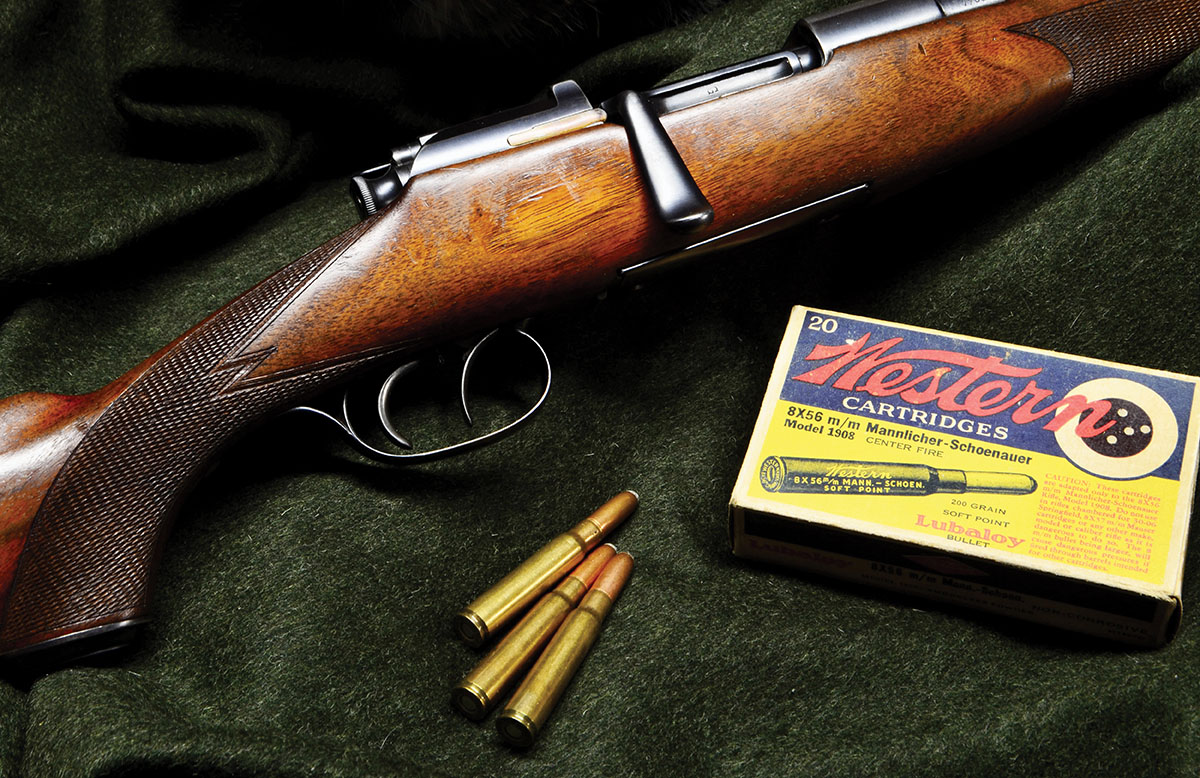

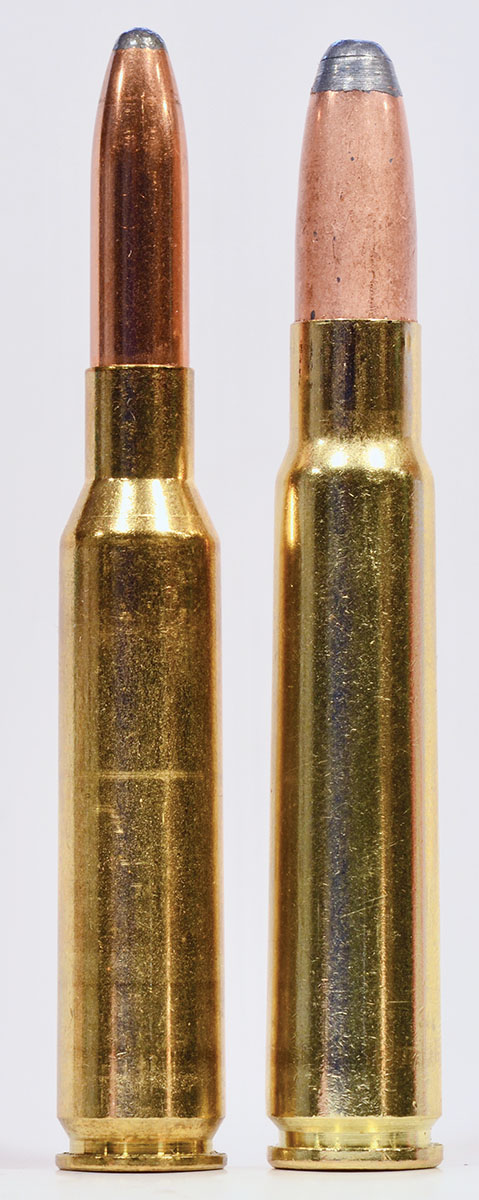
This was near the beginning of the era of smokeless powder and repeating rifles, and designing a workable magazine was every bit as challenging as the rifle action itself. Hence, Schönauer’s name is included even though the magazine was his sole contribution, just as James Paris Lee contributed the detachable box magazine to the British Lee-Enfield.
Schönauer’s rotary magazine is a beautiful piece of design and construction in which the spindle cradles the cartridge firmly and guides it into the chamber. Magazines are removable but not interchangeable, caliber-wise, from rifle to rifle. For this reason, any handload needs to resemble the old factory load to ensure the rifle works smoothly. Since no one loads factory 8x56 M-S and hasn’t been in this country for more than half a century, loading your own is your only recourse.
Early on, the Mannlicher was christened the “gentleman’s rifle,” partly because of its elegant styling and partly its immaculate workmanship. Werner von Alvensleben used a 1903 to cull more than a thousand Cape buffalo in Moçambique, placing his shots carefully. Margot Macomber used one carefully placed shot to dispatch her husband, Francis, in Ernest Hemingway’s famous short story, “The Short Happy Life of Francis Macomber” (Cosmopolitan magazine, September, 1936). Hemingway kept a 1903 aboard his fishing boat, the Pilar, and even mentioned one in A Farewell to Arms. The Mannlicher has a glittering resumé.
Since then, a near-cult has arisen, including a collectors’ association dedicated to the Mannlicher and its rare variations. So, assuming you have a 1908 that is factory original, you might want to shoot it but are not about to alter it in any way to do so. As a result, handloading becomes a back-to-front proposition wherein you search for a load that will put a bullet where you want it, using factory sights, and is a good enough game bullet to do the job when it gets there.
We’ll look at the problems one by one. First, magazines.
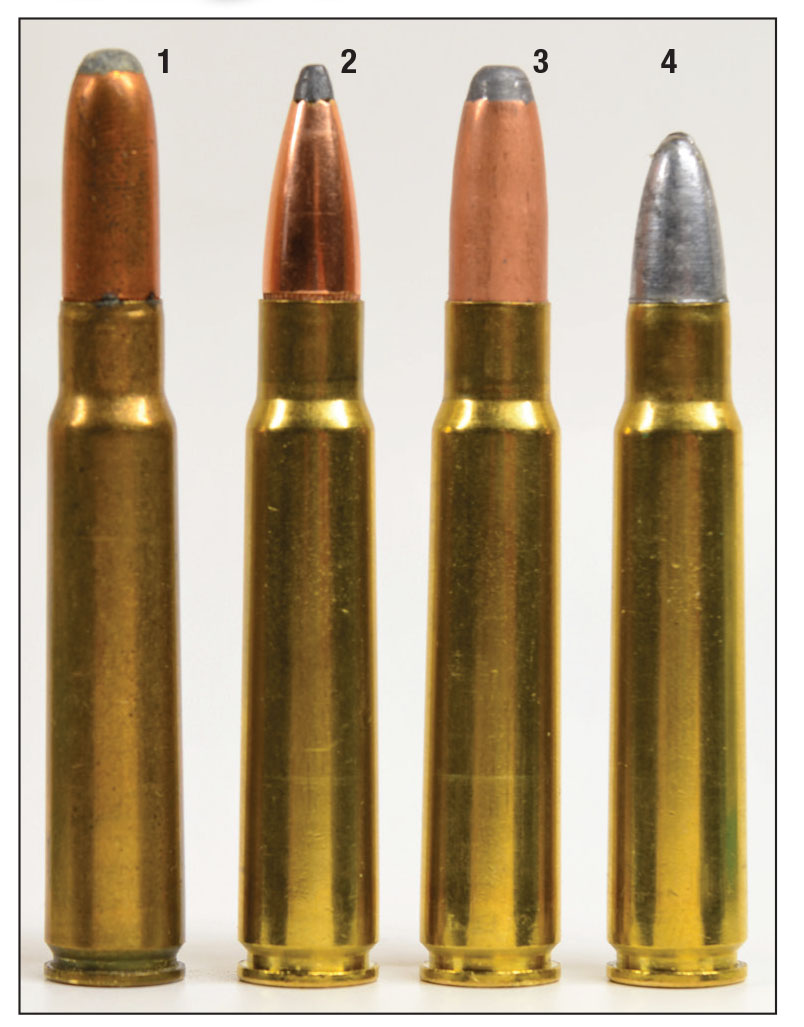
Next, brass. To give an idea of how close the 8x56 M-S is to the 8x57, in the 1920s, one of the ammunition companies – I believe it was C-I-L (Dominion) in Canada, but I can’t find the exact reference – offered ammunition that could be fired in either one. This is astonishing. To be small enough to fit the 8x56 M-S chamber, it would be loose in the 8x57, with attendant headspace questions. One can only conclude that pressures and velocities were extremely low.
Also, I don’t recall any mention of the two extant 8x57 bullet diameters (.318 and .323) which bedevil handloaders of early 8x57. Anyway, it shows how similar the brass is.
If it were just a matter of running 8x57 brass into a sizing die, life would be grand. But it ain’t.
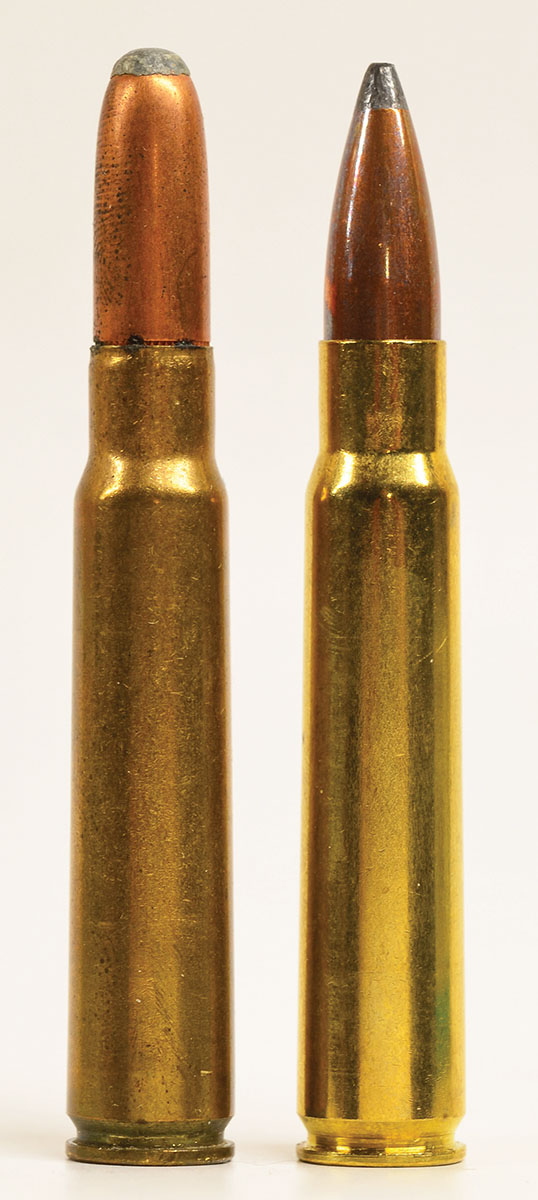
In 1995, Ken Waters, in a “Pet Loads” article on the 8x56 M-S, dealt with this by using a shell holder that was slightly thinner, allowing the brass to be run deeper into the sizing die, essentially swaging it down by five thousandths. Then, trying different brands of 8x57, he found that one type was actually smaller at the base, allowing conversion with no special effort.
Waters concluded his article with a rather plaintive plea for someone to do a run of factory 8x56 M-S ammunition and solve the problem for all Mannlicher lovers, and his plea was not in vain. Around 2012, Quality Cartridge began listing 8x56 M-S, and it’s very good brass. As I write this, it’s out of stock at Graf’s, Midway and Quality Cartridge itself. At some future date, one hopes, it should become available.
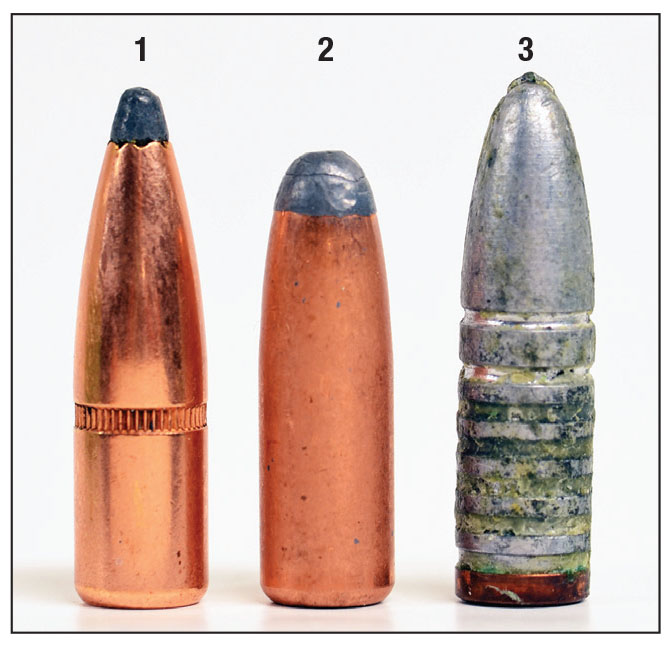
I obtained my first Model 1908 before Quality Cartridge listed it, and my friend Bob Hayley produced a run of 8x56 M-S brass. He sized the bases using a rotary swage. Since then, I’ve used his brass for three 1908s and a 1905 (9x56) I obtained later; to make 9x56, all that’s necessary is to run it into the sizing die. Almost effortless.
Suitable 8mm bullets are easier.
Factory 8x56 M-S fired a 200- grain roundnosed bullet at 2,200 fps. (There are slight discrepancies in weight and velocity, depending on the company, but all are close.)
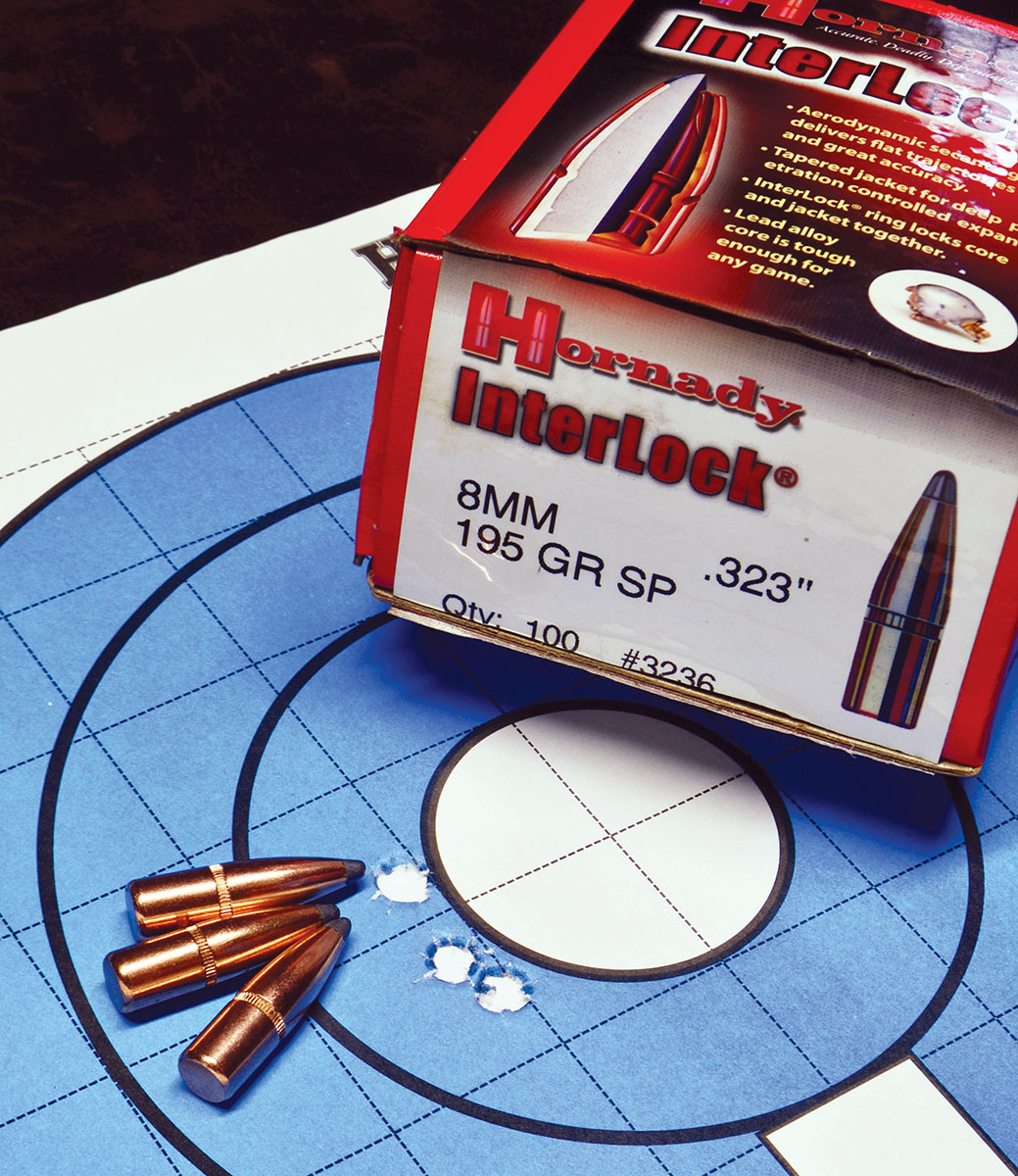
Model 1908 8x56 M-S magazines are usually more forgiving, accepting bullets of different configurations and, hence, shorter cartridges. This flexibility is useful only up to a point. However, since the rifle’s factory open sights are regulated for original ammunition and are not easily adjustable.
Since the Model 1908 is an ideal short- to medium-range rifle for deer and similar game, out to a maximum of 200 yards with factory sights, I concentrated on bullets from 170 to 200 grains for jacketed bullets; I also tried some of Bob Hayley’s 215-grain cast bullets.
Hawk Bullets lists roundnosed 8mm bullets of 180, 200 and 220 grains, with jacket thicknesses of .030 and .035 inches. The 200-grain are custom orders, requiring a four-box (50) minimum. The thinner (.030) jackets should be ideal for hunting at 8x56 M-S velocity.
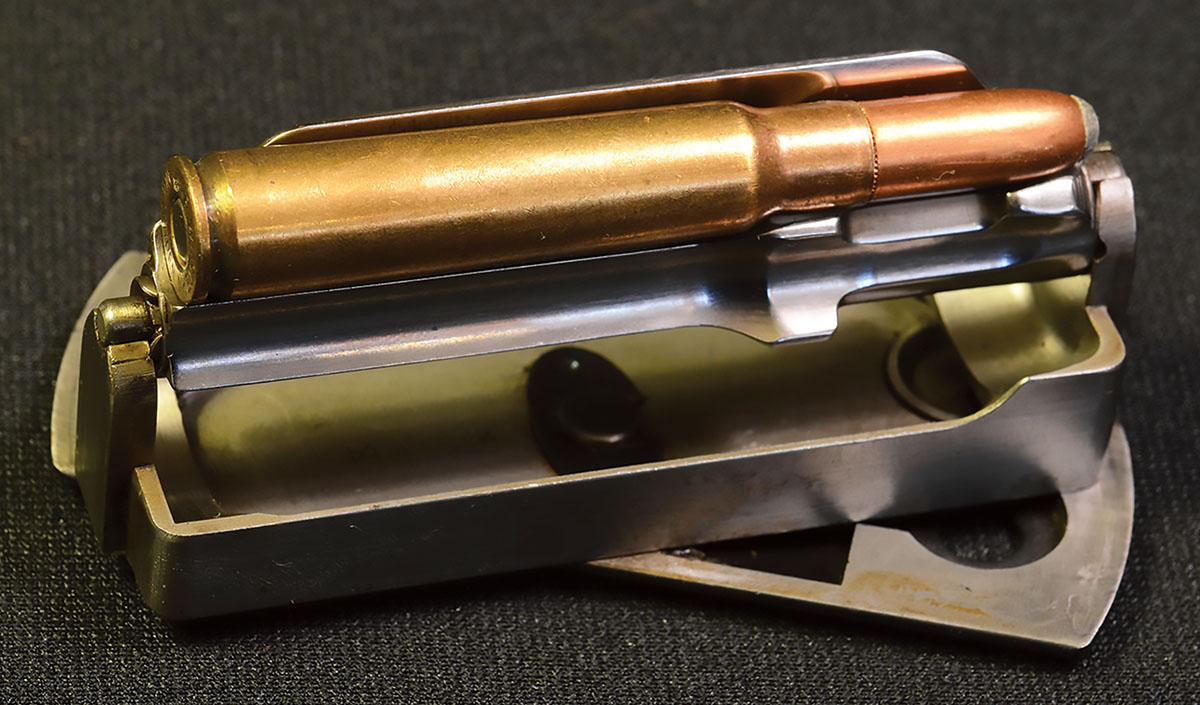
Finally, the rifle’s sights. Mannlichers have open sights with one standing (100 meters) and one folding (200 meters) leaf. These are regulated to the trajectory of the original factory ammunition. In the case of the 8x56 M-S, this is a 200-grain roundnose at about 2,200 feet per second (fps).
At one time, Lyman made a receiver sight to fit the Mannlicher’s split bridge, and there were various scope mounts, mainly the expensive option of a custom claw mount. None of these is a realistic alternative now, even if one wanted to alter a rifle that has considerable collector value. I don’t say it can’t be done, only that I would not do it. Anyway, adding a scope detracts from the rifle’s wonderful handling qualities when prowling creek beds and the like.
Now for loading data.
There was very little specific data for the 8x56 M-S published even many years ago, and none at all today.
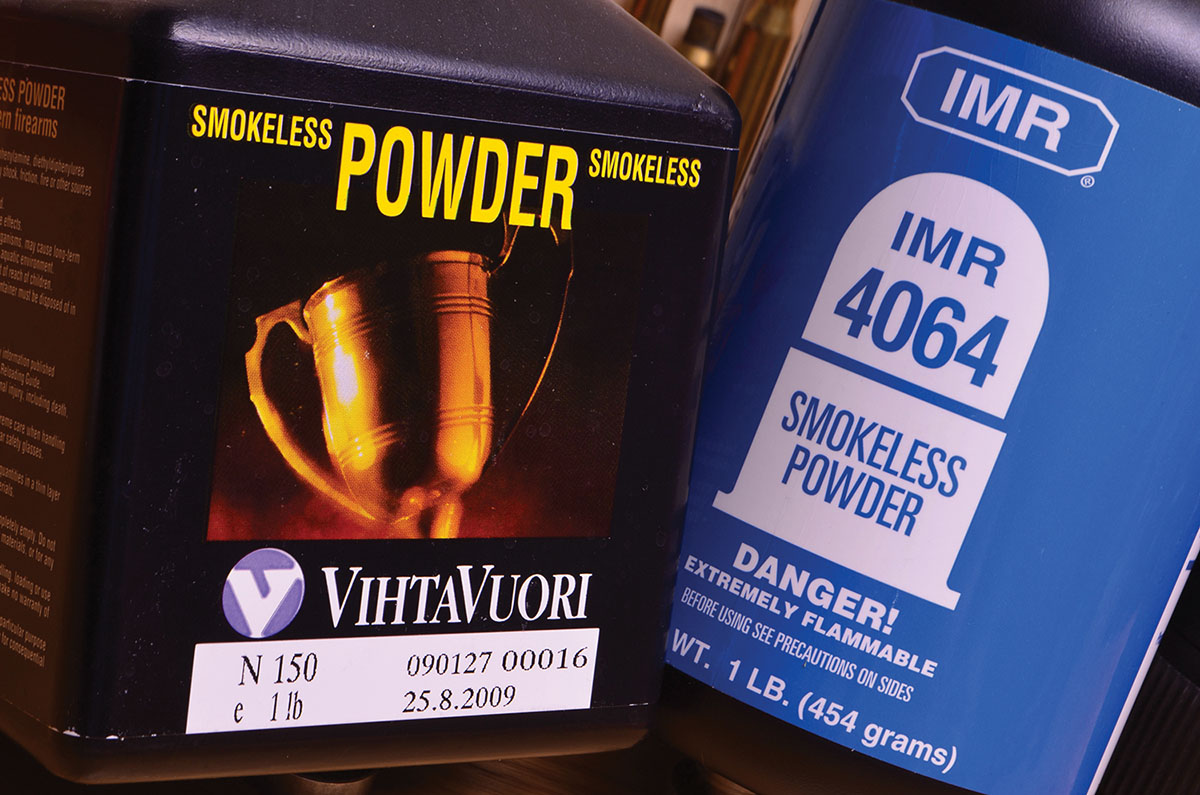
With the Mannlicher, it’s always wise to start low. The action is strong, but if you get sticky cases, it does not have the same camming power as the Mauser 98, and its flat “butterknife” bolt handle doesn’t help.
As we’ve seen above, there are so many variables regarding cases, bullets and even rifle chambers – I know of at least one that was injudiciously reamed larger – that one can’t be too careful. If in doubt, do a chamber cast.
I worked primarily with Hawk 200s, Hornady 195s and cast 215s with gas checks.
Of the different powders tried, the one that delivered both accuracy and velocity was IMR-4064, closely followed by Vihtavuori N-150.
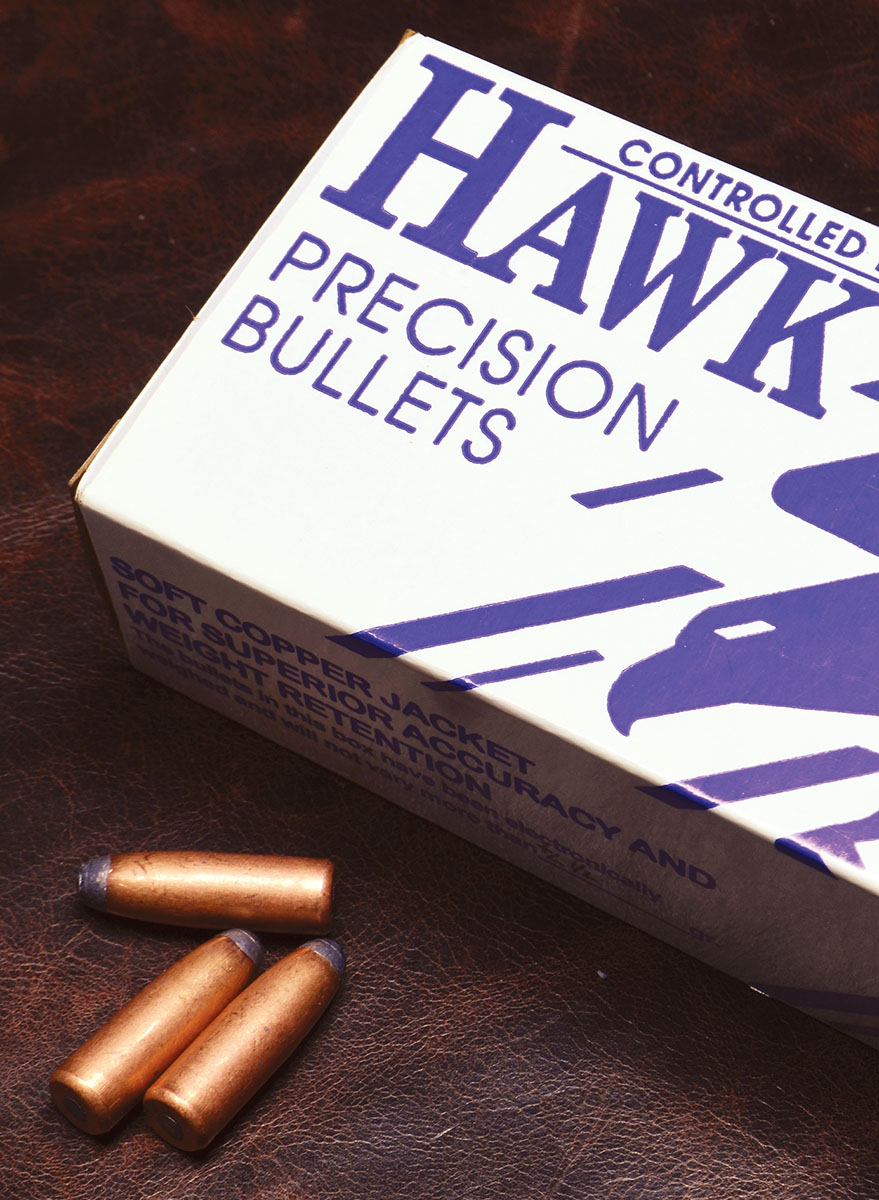
By far, the best accuracy was obtained with Hornady 195-grain InterLocks. The rifle simply loved them, although at 2,247 fps they printed 3.3 inches high and slightly left at 50 yards. Varying the load to reduce velocity a bit at a time should bring the point of impact down, but according to Hornady’s trajectory calculations, the rifle would be almost dead on at 250 yards just as it sits. A happy coincidence, but I’ll take it.
The 215-grain cast bullet, at 1,330 fps ahead of 18 grains of A-5744, printed right to the point of aim at 50 yards, so that load is a keeper for things like armadillos and other undesirable targets of opportunity.
Results with the 200-grain Hawks were disappointing but also contradictory: two bullets touching and the third two inches away. (How many times have we all experienced that?) Windage-wise, however, the group was fine – no adjustment necessary – but in terms of elevation, it was two inches higher than the Hornadys. I’ll come back to the Hawks at some later date if the Hornadys don’t work out.
All of this may seem like a lot of trouble to end up with a rifle that basically duplicates the performance of my old Winchester 94 32 Special, but the thing about Mannlichers is that they are such a pleasure to use; you can’t just leave them sitting in the rack, now can you?
.jpg)


